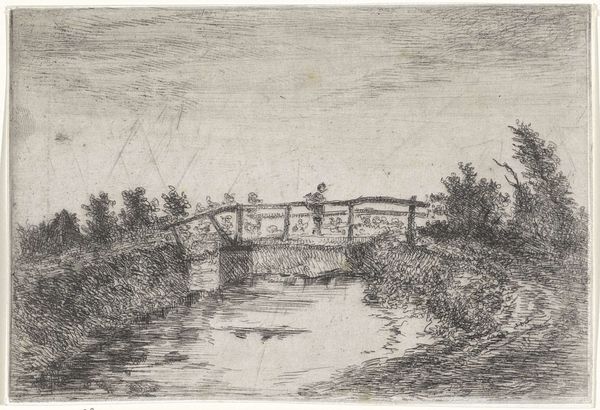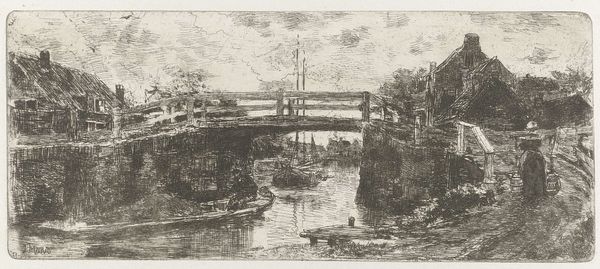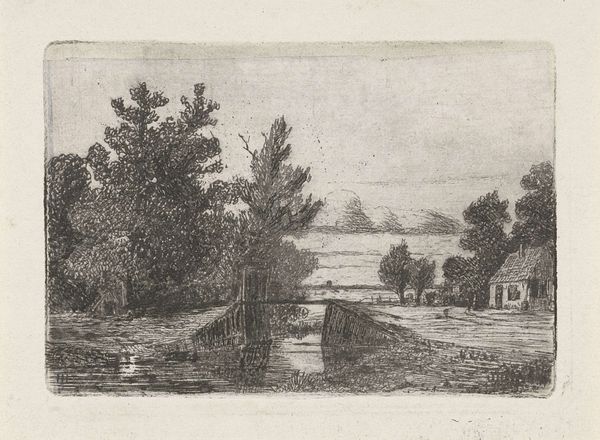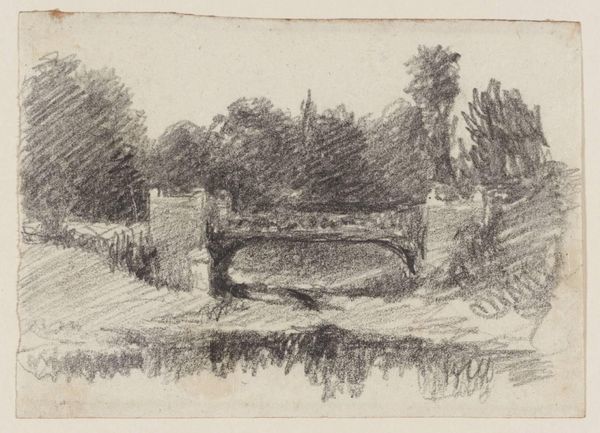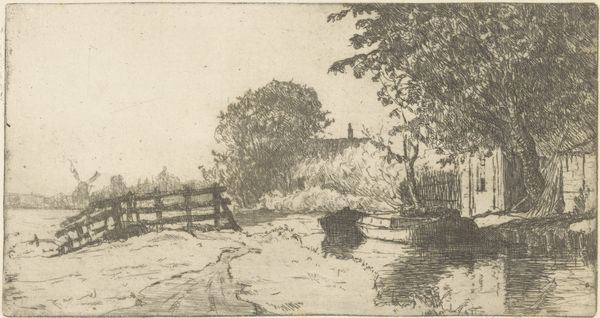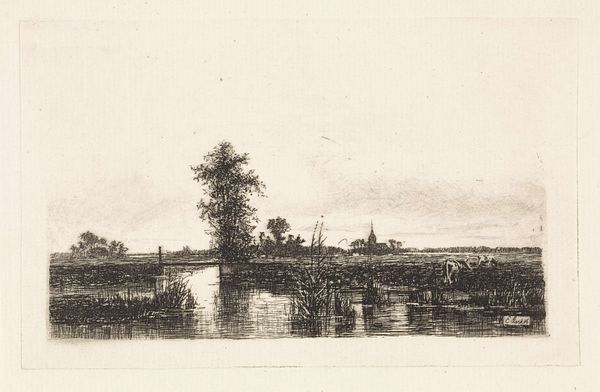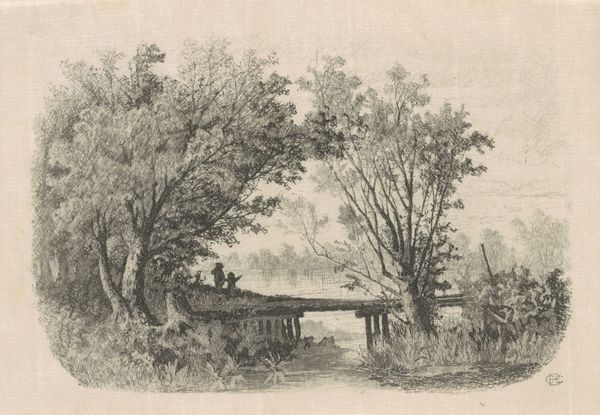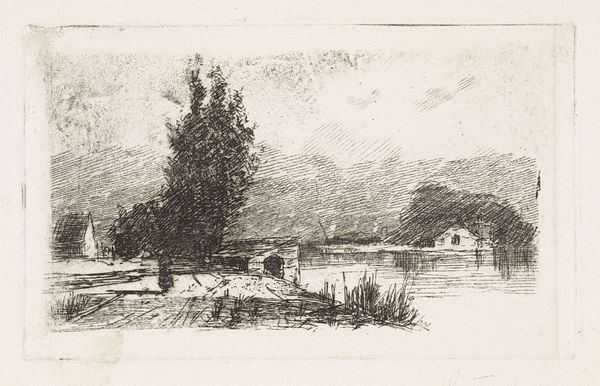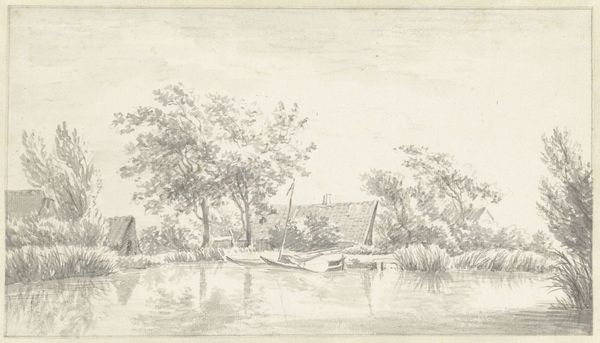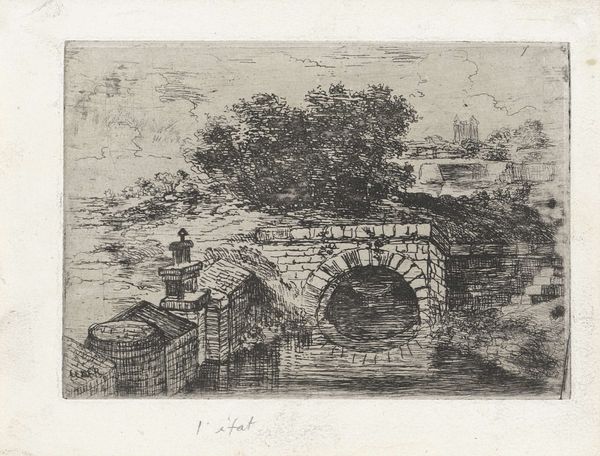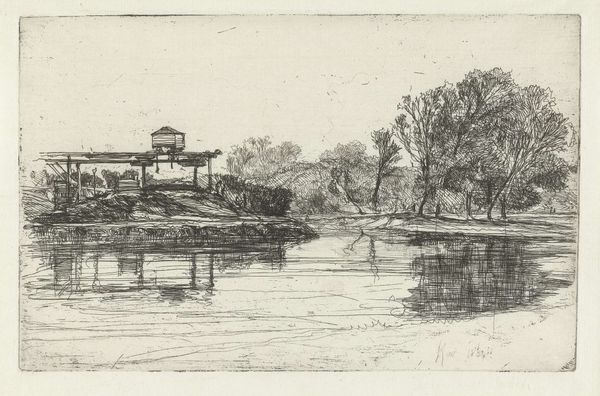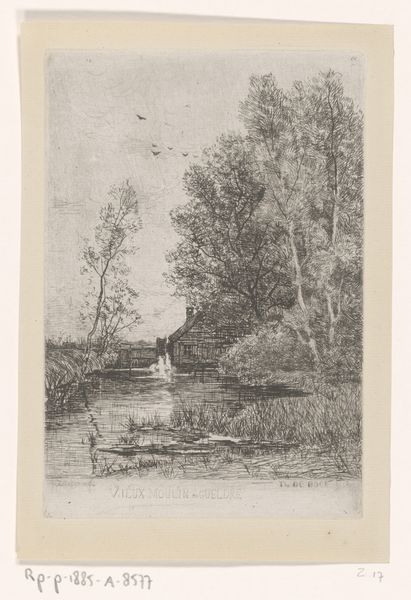
#
amateur sketch
#
pen sketch
#
pencil sketch
#
old engraving style
#
incomplete sketchy
#
personal sketchbook
#
pen-ink sketch
#
pen work
#
sketchbook drawing
#
sketchbook art
Dimensions: height 147 mm, width 216 mm
Copyright: Rijks Museum: Open Domain
Curator: "Landschap met brug"—Landscape with Bridge—conjures a whisper of a past era. This artwork comes to us from Arnoud Schaepkens and likely dates somewhere between 1831 and 1904, a shadow caught in ink. Editor: Immediately, I’m struck by the sketch-like quality, the raw simplicity. There’s a kind of pre-industrial romance to it, a feeling of connection with the earth, but the execution… it feels almost like a mass-produced engraving attempting to capture a bucolic ideal. Curator: It's as if Schaepkens sought to grasp the ephemeral beauty of nature in lines that dance between precision and looseness. Look at the way the bridge is rendered; it's solid and functional, yet the details around it melt into a hazy impression. There's something wonderfully dreamlike about that juxtaposition. Editor: Yes, and that bridge itself… the materiality is intriguing. We see people using it. Bridges are such liminal spaces—conduits built from concrete and wood to encourage social commerce but often they facilitate extraction of materials. Curator: Oh, absolutely, and it evokes that sense of passing, of movement. Perhaps the solitary figure on the bridge isn't just crossing a river, but also crossing a threshold within themselves. I’m completely drawn into that world, pondering the solitary figure. Editor: I wonder about Schaepkens's tools. Did he use a commercially produced pen? Was the paper handmade or industrially processed? These things tell us about access, class, the means of production. The rough, sketch-like nature could also be read as a conscious decision to separate ‘art’ from the industrial process of more polished engravings. Curator: Possibly a means of rebellion, indeed! You've nudged me to see past the immediate charm of the scene. What truly lasts from that era is the connection, though… this desire to connect with, and capture, the serenity of nature. Editor: Precisely, and in this, we have the means to reflect critically on this "serenity", the cost of building it, who got to enjoy this vision of natural idylls. The drawing seems quiet on the surface, but it reveals deeper systems that helped define and, really, commodify leisure for a class of people in the late 19th century. Curator: A valuable counterpoint that reminds us of the importance of seeing beyond the aesthetic. This artwork truly does resonate in layers, if you allow it. Editor: Ultimately, this piece allows us to consider a broader reflection—of landscapes represented and altered. I appreciate how this unpretentious bridge sketch challenges us to contemplate.
Comments
No comments
Be the first to comment and join the conversation on the ultimate creative platform.
